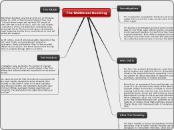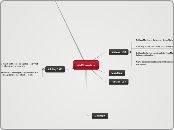Student ID:1006162073
Marina Nicole Sabetti-Franklin
Forensic Facial Approximation
Inconclusive Data
Skin Blemishes
Hair Style
Eye Colour
Hair Colour
Possible Comparison
4.Establish Positive ID
3.Generate new Leads
2.Present Likeness to Public
1.Create a likness of individual
Positive Comparison
Orthidontal
Radiological
DNA
Target Audience
Primed
Seeking missing person ex.family
Casual
May know individual in passing
Methods
Digital
American
Combination/Manchester
Facial Land Marks
Nose
Anterior nasal spine
Nasal aperature
Pro nasally
Lips
Kelly and Kelly
Transitional Zone
Vermillion Boarder
Labial Commissar
Eyes
Anterior-posterior Placement
Maylar/Witnall's Tubricle
Superior Torssal Plate
Medial Canthal Tendon
Skin
(etc...)
Nasospinale
Nasale
Nasion
Glabella
Super glabell
Crime Scene Reconstruction
2Analysis
Cast-Off Stains
Motion Capture Suit and Laser Scanner
Suspect Height
Laser Scanner and CCTV Camera Technology
Shooting Scene
Laser Scanner and Bullet Trajectories
Blood Stain
Laser Scanner and Area of Origin Analysis
3.Visualization
Virtual Reality
3D Print
Interactive 3D Models
Virtual Tours
3D Rendering
2D Plan Drawings
1.Documentation
3D Technology
Video/Photogrammetry
Drones
Laser Scanner
Phase Shift Meathod
Time of Flight Meathod
Structured Light Scanner
3D Microscope
Manual
Sketches
Strings
Tape Measures
Fingerprint Analysis
Examination
Further Visualization Methods
Recover Lift
Infrared Photography
Photo Editing
Gel Scan
Vacum Metal Deposition Chamber
Substrate
Semiporous
Tape
Tape Glo
Sticky Side Powder
Non-Porous
Cyanoacrtlate (Glue Fuming)
Adrox
UV Light
Rhodamine 6G
Trace Laser
Basic Yellow
Blue Light
Porous
Powders
Nano Flourescent
Fluorescent Magnetic
Grey
Chemical
Ninhydrin
1,8 Diazafluren-9-One
1,2 Indandione
Matrix
Foreign Materials
Sebaceous Sweat
Eccrine Sweat
Level Of Detail
Level 3
Width
Edge Shapes
End Shapes+Angles
Pores
Level 2 (Minutiae)
Enclosure
Bifurcation
Ridge Ending
Short Ridge
Ridge Unit
Level 1 (Overall Flow)
Focal Points
Delta
Core
Pattern Types
Whorl
Loop
Arch
Orientation
ACE-V
Verification
Inconclusive
Exclusion
Conclusion
Evaluation
Comparison
Analysis
Fingerprint
Both the pattern found on human skin(friction ridges) as well as the mark left behind on a surface from making contact with this skin pattern.
Structure
Layers
Dermal Papillae
2 layers of skin pegs in-between the dermis and epidermis holding the epidermis in place.
Epidermis
Thin outer layer consisting of cells that take a month to shed.
Has 5 primary layers:
-Stratum corneum
-Stratum lucidum
-Stratum granulosum
-Stratum spinosum
-Stratum Basal/basale
The basal layer is directly in contact with the dermal layer and iis where new cells are formed.
Stratum Basal
Stratum Spinosum
Stratum Granulosum
Stratum Lucidum
Stratum Corneum
Dermis
Thick inner layer
Units fuse together during fetal growth
Each unit has a sweat gland and pore
Made up of ridge units
Characterisitics
Many nerve endings
Minimal pigmentation
No hair
More sweat glands per sq in
No sebaceous glands
Anatomy of Friction Ridges
Allows for traction
Found on all primates
Also known as 'Volar'
Four Premises of Friction Ridges
4.Vary within limits, allowing for classification
3.Unique to every person
2.Never change unless scarring, disease, or death
1.Develop prior to birth
Fingerprint Composition
The natural secretions on the surface of skin mixed with other materials like sweat and foreign materials such a dirt can leave behind an impression/deposit upon contact causing a replication of the fingerprint.
Impression Mark
The replication of a fingerprint using an ink-pad and paper for later identification.
Shooting Scene Examination
Blood Stain Pattern Analysis
Point of Origin
Visualization Meathods
Computer Modeling
String Meathod
Locating
3.Calculate Angle of Impact
2.Look for Area of Convergence
1.Look for Directionality
Blood
Visualization/Enhancment
Simple Transfer
Alginate Lift
Chemicals
Leuco Crystal Violet
Amido Black
Hungarian Red
Properties
Viscosity
4x more than blood
Surface Tension
Composition
Buffy Coat
Erythrocytes
Plasma
Classification
Types
Spatter
Impact Pattern
Patterning due to Fire Arms
Expirated
Cast-Off
Sessation Cast-Off
Projected
Transfer
Wipe
Swipe
Simple Contact
Passive
Saturation Pattern
Flow Pattern
Pool Pattern
Splash Pattern
Drip Pattern
Drip Trail
Drip Stain
Exceptions
Voids
Blood Clotting
Decomposition Over Time
Drying Over Time
Insect Interferance
Dilution
Foot Wear Analysis
Impression
When an object or material has retained the characteristics of other objects or materials that have been pressed against them.
3D
Identification
Occurrence # /adress
Date of Cast
Officer's Initials/Badge
Footwear #
(FW#)
There may be multiple foot prints located at the scene thus each must be numbered.
Casting
Allows you to create a replica of the impression or object to bring into court to show the judge and jury.
Impression is casted after proper photography is completed and potential debris is removed.
A release agent may also be applied to help remove the cast (ex.parting powder)
After fully cured the mast needs to be leaned using a course brush.
Dental Stone
Can be casted on multiple surfaces.
After pouring you must wait 30min before removing and another 24 hours before fully cured.
Sulphur
Only used to cast impressions in snow.
After heating up and pouring over an impression one would usually pour dental stone over top for durability due to sulphur being very fragile.
4.Apply Contrast
In certain scenarios ex.snow, the impression may not be visible and thus it is necessary to apply snow-print wax or primer paint in-order to see the impression.
Could increase the melting rate of the impression thus needs to be done quickly or under shade.
Place light at a 35-45 degree angle.
2.Place Scale
Scale must be level with the bottom of the impression.(Ex Recess the L-scale into dirt instead of leaving it on the surface to get the proper depth perception)
Insure that you never place scale or anything over the impression as it obstructs the evidence.
1.Set up Tripod
Just like 2D tripod should be parallel to the impression.
Dealing with length width and depth.
Thus, you cant just involve photography but also must use a cast.
Sand
Dirt
Mud
Slush
Snow
2D
Usually footwear or tire tracks.
Recovery
Gelatin Lifter
Works for both a dried wet origin impression and a dry dust impression.
A gelatin layer covered by a clear acetate with a black or white backing. Due to it's extra weight the gelatin sinks onto the floor more than mylar and thus can pick up more of the substrate.
Can be used for lifting fingerprints, footwear impressions and even blood impressions.
Must be photographed immediately after being lifted due to the layer of clear acetate applied over the impression. This acetate layer prevents you from seeing the impression without peeling the layer back off. Every-time you do so you are risking damaging your impression.
(Is a laterally reversed image thus must be corrected)
Is a one time use but can be preserved.
Electrostatic Lifter and Mylar Film
Use mylar and apply an electrostatic charge to the foil which takes the dust and cause it to be sucked up and adhered to the mylar.
Easy to use and can be reused but very expensive.
Fingerprint Powder and Lifting Tape
Only works with a dried wet origin impression.
Ex. if you try to use this method with an impression left from a dusty shoes it will not work as the dust will be wiped off.
Usually only used on glass and plastic.
Fingerprint tape can stabilize an impression onto the surface in-order to move the substrate(ex.glass fragment) instead of trying to remove the impression from a substrate.
Photography
Use Tripod in-order to control shudder speed and depth of field.
Position on a levelled surface to not have it tip or fall over
Insure the tripod is parallel to the impression to get accurate scaling of the impression.
We are photographing in relation to the impression. NOT THE GROUND. Thus if the impression is on a hill and we position it to the ground the image will be distorted.
Use Tape
Finding
4. Mark Location
To ensure remembering the location and to not disturb the evidence, mark both ends of the impression.
3.Use Oblique Lighting
Light held at a low angle.
2.Darken Room
1.Examine Floor
Dust Foot Print, Finger Print
Mud, Blood, Paint
Locations
Check all areas within the scene in which we know someone has been.
Point of Exit
Disturbed areas
Points/attempted points of Entry
Route to Scene
Forensic Sciences
Principals and methods used in matters related to the law.
Type in your name
Crime Scene Investigation
Contact information
Any CV or résumé needs to contain your contact information. This way, recruiters can get in touch with you.
Specialists
Forensic Scientist
Firearm
Examining potential impressions to identify if a particular firearm or tool was used at the scene of a crime
Documents
identifying if a document has been altered or not
Toxicology
testing of biological and non-biological samples with respect to drugs and alcohol
Chemistry
Testing for physical trace evidence and change in physical properties
ex. at a scene of an explosion they can identify if there is any useful evidence
Biology
Testing of DNA and bodily fluids
Forensic Identification Officer
(FIO)
Involved during more severe crimes ex.homicide
Processes the scene more thoroughly.
8-10 week intensive training course + additional specialized training
Scene of Crime Officer
(SOCO)
Processes and documents less complex crime scenes.
Usually have additional specialized training and photography skills.
ex.
- canine handling
- traffic reconstruction
Investigating Officer
The first general officer on the scene.
They will secure the scene to prevent:
- destruction evidence
- contamination of evidence
- interference of the public
Conrdoned Area
Sealed area in which evidence may be found
Path of Contamination
pathway where authorized individuals can enter and exit the scene
Locard's Principal of Exchange
When an object comes in contact with a surface there will always be an exchange of material.
Physical Evidence
Examination of Evidence
1.Identify
Is there a change in state or chemical composition?
ex. the car has it's paint chipped.
2.Compare
ex.Most paint chips have 5 layers where this one has 8.
3.Conclusion
ex.The car must have come from this specific auto shop.
Blood,Semen,Saliva
Ammunition, Paintchip, Drugs









